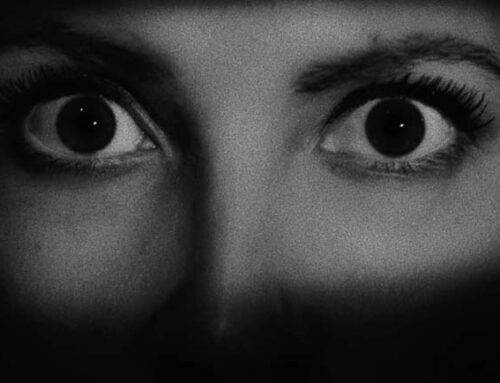Orbiting a planet on the brink of war, scientists test a device to solve an energy crisis, and end up face-to-face with a dark alternate reality.
In Cloverfield (2008) a giant monster crash-lands in New York and promptly begins to destroy the place, building by building, while a group of friends watch (and record) helplessly. I enjoyed it a lot, and thought it a worthy addition to the “found footage” genre of horror movies. 10 Cloverfield Lane was a tight, claustrophobic thriller set in a bomb shelter wherein John Goodman tries to dominate and protect his “guests,” with disastrous results (that also neatly tied into the first movie). The second movie in the Cloverfield series was amazing and scary and thoughtful, and Goodman deserved every accolade, nomination, and award that he got for that role. 10 Cloverfield Lane was the (kind of? maybe?) rare sequel that was ten times better than the original.
And then we have The Cloverfield Paradox.
The year: 2028. The crew of the Cloverfield space station is preparing to fire up their particle accelerator in their urgent quest for a global fuel source (just go with it). Earth’s power grid is on its last legs, and there are wars being fought over resources. When the ignition of their particle accelerator fails horribly (as it should or this is going to be a short movie), bad stuff happens. Weird stuff. Phantom screaming in the bowels of the ship lead them to find someone trapped inside its walls, stuck in place by the ship’s wires and tubes that have been inserted into her body. Another crew member gets his arm sucked into a wall and severed, but feels no pain and experiences no trauma (other than suddenly being armless). Later, the severed arm starts crawling away on its own, exhibiting some modicum of intelligence as it frantically tries to send a message to the crew.
Seems that when they fired up their accelerator the crew ripped a hole in the fabric of dimensionality (again: just go with it) and need to get back to their own space in order to set things right. If they fire it up again, everything will be fine, right? (again: just go…oh, never mind)
There are some interesting ideas in The Cloverfield Paradox, but those ideas are in the middle of a jumbled mess. With every new event allegiances changed, suspicions were raised, double crosses were crossed, and characters ran from one end of the ship to the other. A lot of running.
The actors do their best with the material, spouting jargon and building (and breaking) alliances as they try to get the universe back together. Fulfilling Chekov’s Theorem, a 3D-printed gun is introduced in the first act, necessitating its use in the third. The character we think has ulterior motives–yep, has ulterior motives. The movie is so by-the-numbers it should come with a paint set. The one thing I found fascinating and true-to-life was that one of the crew (the wonderful Ziyi Zhang) speaks only in Mandarin to her cohorts, and some speak back to her in Mandarin, some in English, but they all understand each other. Considering how Mandarin is quickly becoming a common language of choice for some global commerce, I thought it was a fun detail.
The movie looks good. They evidently spent some money on the sets and special effects, so it’s a shame that the dialogue and plot fall so flat. One of the problems, I think, is the well-publicized choice the filmmakers made by taking a stand-alone script called “God Particle” and, after filming finished, reshooting some scenes and adding others in order to shoehorn the “Cloverfield” mythology into the narrative. The final shot is so ludicrous and incongruous it made me groan out loud and roll my eyes. Ugh.
I’m sure this would be a fine movie to have on in the background as you do your taxes or clean your pets, but otherwise proceed at your own risk. The Cloverfield Paradox is now available on Netflix.
| The Cloverfield Paradox | ||
| RATING: | UR | THE CLOVERFIELD PARADOX | Trailer [HD] | Netflix |
| Runtime: | 1hr. 42Mins. | |
| Directed By: | ||
| Written By: | ||











